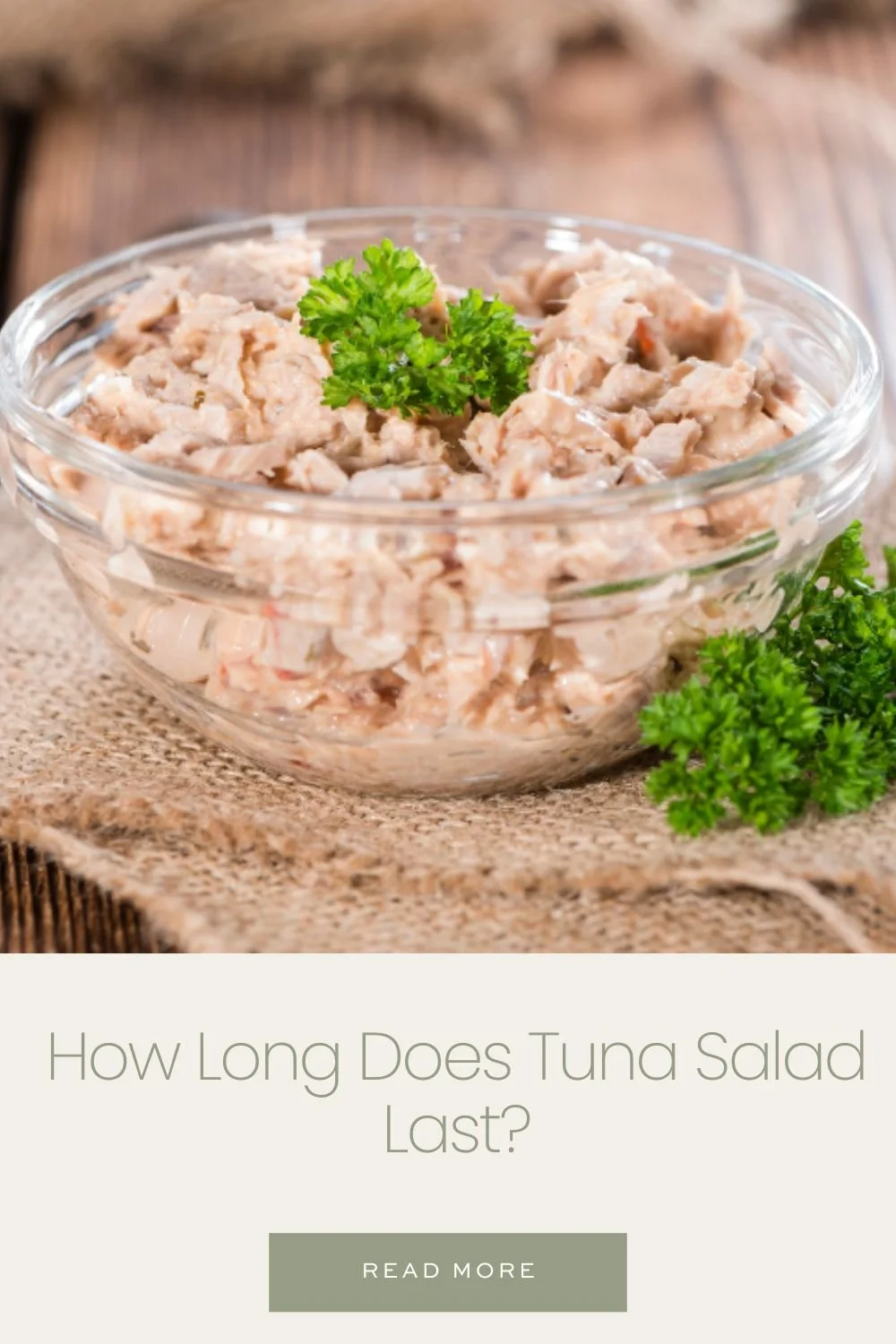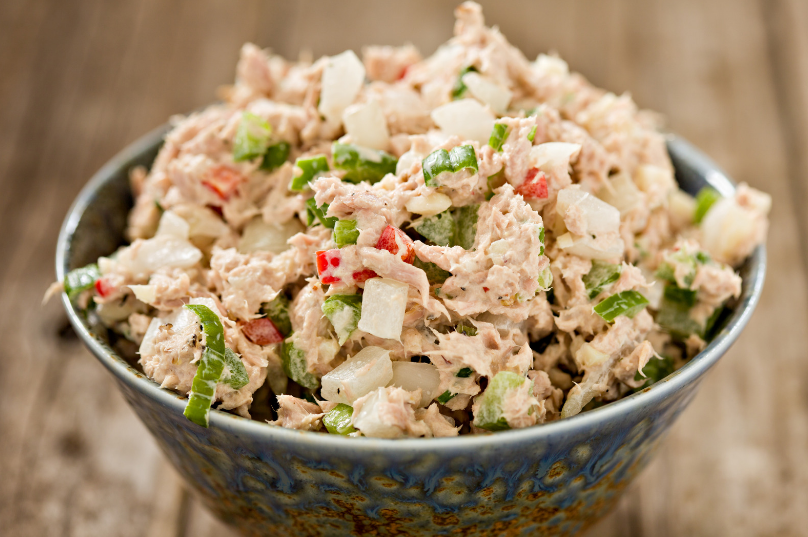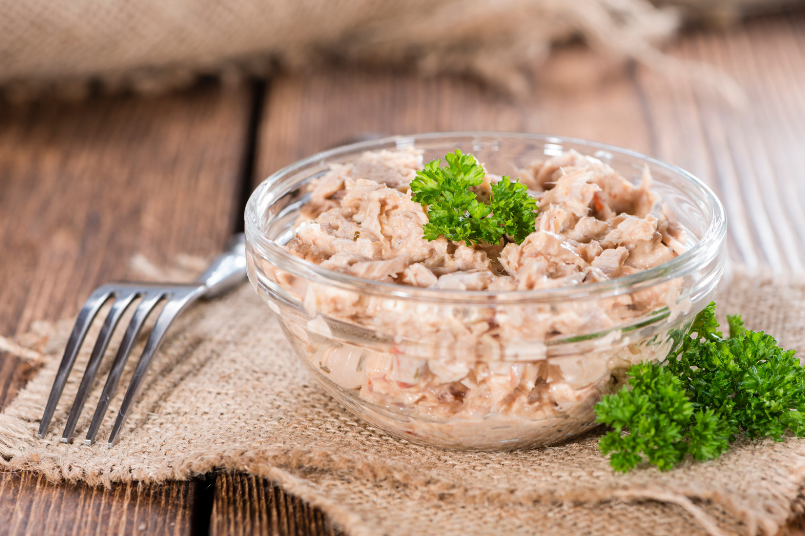How Long Does Tuna Salad Last?
How Long Does Tuna Salad Last?
You've prepped tuna salad sandwiches for lunch all week, but will those meals stay fresh in the fridge? In this complete guide, I'll discuss how long your favorite meal lasts, going over factors that affect its longevity, and tips to make sure it stays fresh for longer. Whether you're meal prepping a light lunch or simply curious about food safety, find out everything you need to know about how long leftover tuna salad lasts!
How Long Does Tuna Salad Last in the Refrigerator?
Tuna salad can last for about 3 to 5 days in the refrigerator if stored properly. The best way to extend the tuna salad shelf life is to follow the recommended guidelines. First, make sure to store the tuna salad in an airtight container to prevent any outside odors or bacteria from contaminating it.
The best storage method is to keep the container in the coldest part of your fridge, which is usually the back or bottom shelf. This helps maintain a consistently cool temperature and minimizes the risk of bacterial growth. If you notice any changes in color, texture, or smell, it's best to discard the tuna salad to avoid any potential foodborne illnesses.
Signs of Spoilage
Detecting spoilage isn't always straightforward: There are specific clues that your tuna salad has gone bad. Beyond the five-day guideline, look for signs of spoilage before deciding to eat it. Check out changes in appearance, smell, or texture. If anything seems off or the salad gives off a sour or unpleasant odor, it's a sure sign that it's time to discard it.
Look out for telltale textural changes: Pooling liquids at the bottom is a no-go. If you see water separating or notice that the creamy consistency has shifted to something more liquidy, the salad isn't what it used to be and is likely unsafe to eat.
Be mindful of any color alterations or mold growth: Look out for bad appearance in color shifts, dark spots, or the presence of mold. Even a small spot of mold means it's time to say goodbye to the tuna salad.
Factors Affecting Freshness
The shelf life of tuna salad isn't just a matter of time—many factors can accelerate or decelerate spoilage. From the moment ingredients mix, the freshness clock starts ticking based on factors like the tuna's initial quality, the utensils' cleanliness, and the temperature at which the salad is stored. The acidity from a squeeze of lemon might give you a slight extension while leaving the dish out during a summer picnic can shorten its shelf life. A cooler climate within your fridge can help maintain your tuna salad for longer.
Ingredient Quality Impact
Fresh, high-quality canned tuna reduces the risk of premature spoilage.
Mayonnaise freshness is crucial, as it's prone to bacteria growth.
The acidity level in additives like lemon juice can extend freshness.
The freshness of herbs and vegetables mixed in affects overall longevity.
Using clean utensils and containers prevents cross-contamination.
Temperature Variance Effects
Avoid temperature changes as much as possible when storing your tuna salad, as proteins in the tuna and the emulsification of the mayonnaise become unstable.
Even just a couple of degrees above 40°F (4°C) can encourage bacteria to thrive.
Temperatures dipping too low can also compromise the consistency of the salad, making crunchy vegetables like crisp celery snap less and mayonnaise separate. Do your best to maintain a constant chill when it comes to your delicious tuna salad.
Safe Storage Practices
To properly store fresh tuna salad, storage conditions are super important! Transfer it to an airtight container and refrigerate it promptly. Make sure to keep it at a temperature below 40°F (4°C) to prevent bacterial growth, as mentioned. Don't forget to consume the tuna fish salad within 3-5 days for the best quality. By following these storage tips, you will be able to keep your tuna salad fresh for longer.
Container Types Matter
Different containers have different levels of success in preservation, freshness, and warding off bacteria - glass and high-quality plastic are your best bets.
When selecting your container for food storage, use glass containers if possible - they won’t retain odors or stains and can help your salad stay scrumptious even longer. Plus, glass is non-reactive, meaning it won’t interact with the acids or components in your salad, making sure the taste stays delicious.
If you are using plastic containers, make sure they are BPA-free and have a tight-sealing lid. We're not just trying to keep air out; we're stopping any cross-contamination from other foods, too.
Maximizing Tuna Salad Longevity
Quick chilling after preparation is important to stretch out the shelf-life of your tuna salad. To keep your salad fresh for longer, it's best to scoop it into a shallow container. This shape allows for more surface area to be exposed to the cold fridge air, which helps it cool down quickly. After making it, make sure to store it in the fridge within two hours to prevent it from becoming a breeding ground for bacteria and, therefore, becoming a bad tuna salad.
Proper Handling and Preparation
Make sure that you are using fresh ingredients and that they are refrigerated soon after purchasing. Start with top-quality tuna and fresh, crisp veggies.
Wash your hands and all utensils thoroughly before beginning your tuna salad assembly to minimize bacterial contamination.
Store your tuna salad in a tightly sealed container to prevent it from absorbing any unwelcome odors or flavors from the refrigerator. Consider portioning the salad into individual servings for minimized exposure during container openings during the week.
The Role of Preservatives
Antioxidants prevent oxidation that can lead to spoilage.
Acidulants like vinegar or lemon juice lower pH to create an inhospitable environment for bacteria.
Salt draws out moisture that bacteria need to thrive.
Ingredient quality matters; preservatives can only do so much if you start with so-so components.
While natural preservatives help, proper refrigeration is still the most important key to keeping your tuna salad safe and delicious.
Knowing how long tuna salad lasts and following proper storage instructions is so important for maintaining its freshness and preventing food poisoning. These guidelines can work whether you are prepping a tuna casserole, a tuna pasta salad, creamy tuna melts, or just a classic tuna salad recipe. By keeping it in an airtight storage container in the refrigerator and consuming it within 3-5 days, you can enjoy delicious and safe tuna salad for your meal prep lunches. Remember to check for any signs of spoilage and use your personal preferences when it comes to the ingredients and flavors you add to your homemade tuna salad.

































Learn how to make Persian Lubia Polo with fluffy basmati rice, green beans, and warm spices. A comforting, beginner-friendly family recipe.